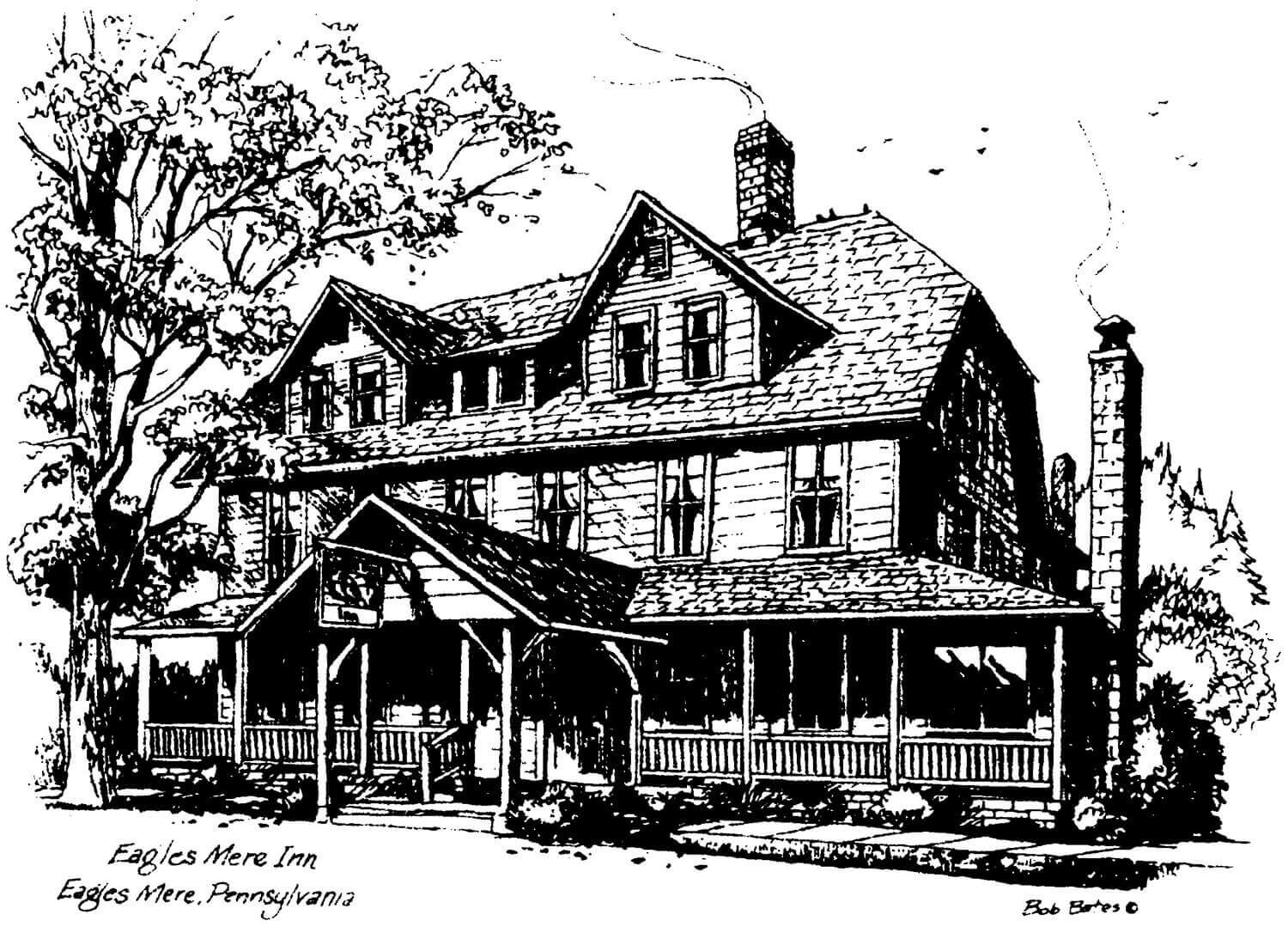Call the Inn directly for stays less than two nights. 570-525-3273
The History of Eagles Mere

In 1681 King Charles II gave William Penn a large tract of land and Penn’s heirs gave and sold off sections of this wilderness. Wealthy Englishman George Lewis bought the Lake and over 10,000 surrounding acres in 1794 for a dollar per acre. He bought it for commercial purposes and later determined he could produce glass from the natural white sand in the Lake and called the Lake “Lewis Lake.” The glass industry struggled for ten years or so and did not survive. An agricultural period followed, and in the late 1800’s, the area was promoted by prominent Philadelphia Judge Richter as an ideal vacation spot to his friends in the “Main Line of Philadelphia.” Beginning about 1870, Eagles Mere grew to national notoriety as a resort. Large summer cottages were built, and it became a refuge from the summer heat and disease in large cities like Philadelphia, Baltimore and Harrisburg. Train access ultimately ensued and one could take a train almost door to door from Philadelphia’s Reading Station.
Some early cottages turned into Inns with the burgeoning demand and by 1886, as the scale of activities expanded, E.S. Chase (Captain Chase) developed street plans, water and sewer systems, and brought hydro-generated electricity to the area. Eagles Mere’s early public planning pioneered efforts to protect the Lake and its pristine environs, a theme that prevails today.
Much of the early social life took place around the Inns (many had now become hotels), an active theater program, as well as golfing, tennis, hiking, and boating. Women were seen in long dresses carrying parasols and men donned 3-piece suits, dress of another era. In the summer, with the big hotels and rail access, the town population swelled enormously. Eventually, time and changing vacation patterns in the 1960’s put an end to the large-scale hotels because of the relatively short season. The only original hotel to survive today is the Eagles Mere Inn, built in 1887.
As much as the old hotels have changed, more has remained unchanged. The town has virtually all of its magnificent architecture still in place (it is on the National Register of Historic Places), fresh mountain air still welcomes every day, and golf, lake activities, hiking and tennis still predominate. Generations of families have summered here and brought their friends. It is easy to enjoy the town’s many amenities in this stunning, unspoiled beauty, surrounded by thousands of acres of pristine forest. Today, active programs are run all summer for sports, hiking, tennis and environmental education. No one is ever at a loss for things to do. The town also hosts five significant museums: the Eagles Mere Museum, the Canoe Museum, and the Eagles Mere Auto, Air, and Motorcycle Museums. Nearby are waterfalls, kayaking, state parks and fly fishing. “Come for a day, you will love it forever.”

